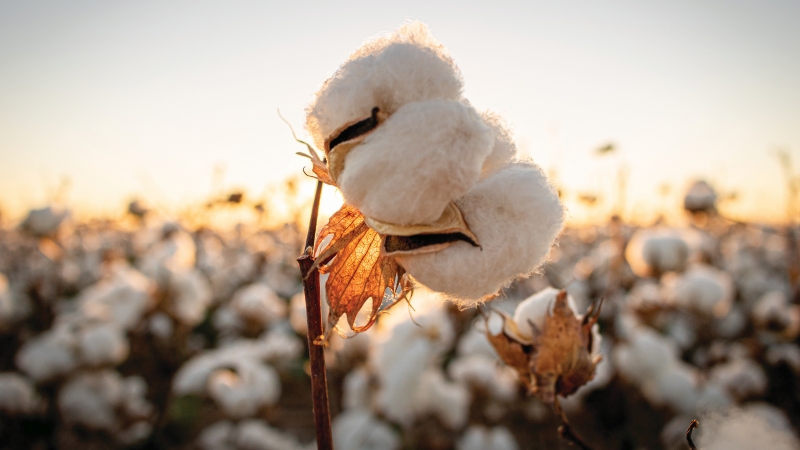2015: The Year in Cotton Production
From the Cotton Grower 2015 Annual
It would be impossible to discuss the 2015 growing season without mentioning the stagnant cotton market, which languished in the 60-cent range for almost the entirety of the year. It affected every on-farm decision, including the most basic one; whether to plant cotton at all.
Ultimately, American cotton farmers planted 8.9 million acres of cotton in 2015, the lowest total since 1983.
Of the acreage cotton retained in 2015, there were always peripheral factors helping its cause. When polled for acreage estimates, cotton specialists from across the Cotton Belt noted outside factors influencing growers to stick with cotton. In Texas, the Sugarcane Aphid drove acres out of sorghum and into cotton. In Georgia, cotton provided a dryland alternative and a good rotational option for peanuts. In the Mid-South, competitive crop prices were lagging as well, helping cotton to hold on to some ground it may have otherwise lost.
The pragmatic task of actually planting those acres provided the first true challenge of the season for growers across the Cotton Belt. In West Texas, torrential rains began in early May and continued throughout the month, causing significant delays in planting. Growers throughout the Cotton Belt raced against time to finish planting well into June. In a development that poignantly displayed the breadth of America’s farming conditions, the Ortega brothers of Harlingen, TX, produced the nation’s first bale on July 15, only a month after much of the Cotton Belt was finishing planting.
The summer months brought their usual crop protection challenges. A wet spring progressed into a weed-stricken summer across much of the Cotton Belt, where glyphosate-resistance – most often in the form of Palmer amaranth – was prevalent throughout the Southeast, Mid-South and Southwest. That struggle was reflected in the variety choices growers made on the front end of the season.
“Transgenic varieties – genetically engineered varieties resistant to worms, herbicides or both – accounted for about 98.8 percent of Upland cotton planted in the United States in 2015,” said the USDA Cotton Varieties Planted 2015 Crop report, released in September. In Alabama, Arkansas, Arizona, Florida, Missouri, Mississippi, New Mexico and Tennessee, every single acre planted in cotton was given to a transgenic variety. Growers still spent excessive amounts on inputs to control weed pests throughout the year.
Harvest season was not without its challenges, as well. While cotton growers in the Southwest raced against the clock to pack in heat units and harvest their crop, producers along the Atlantic coast were besieged by excessive rains. In the Carolinas, boll sprouts were prevalent.
In a development that mirrors recent years, many growers across the Cotton Belt set personal yield records in 2015, thanks in large part to superior germplasm from the seed companies, as well as progressive management practices.
In a year when cotton prices are low while input costs continue to rise, yield numbers provided a lifeline to growers across the United States. They will no doubt keep a wary eye on commodity prices as they look ahead to the 2016 season.








